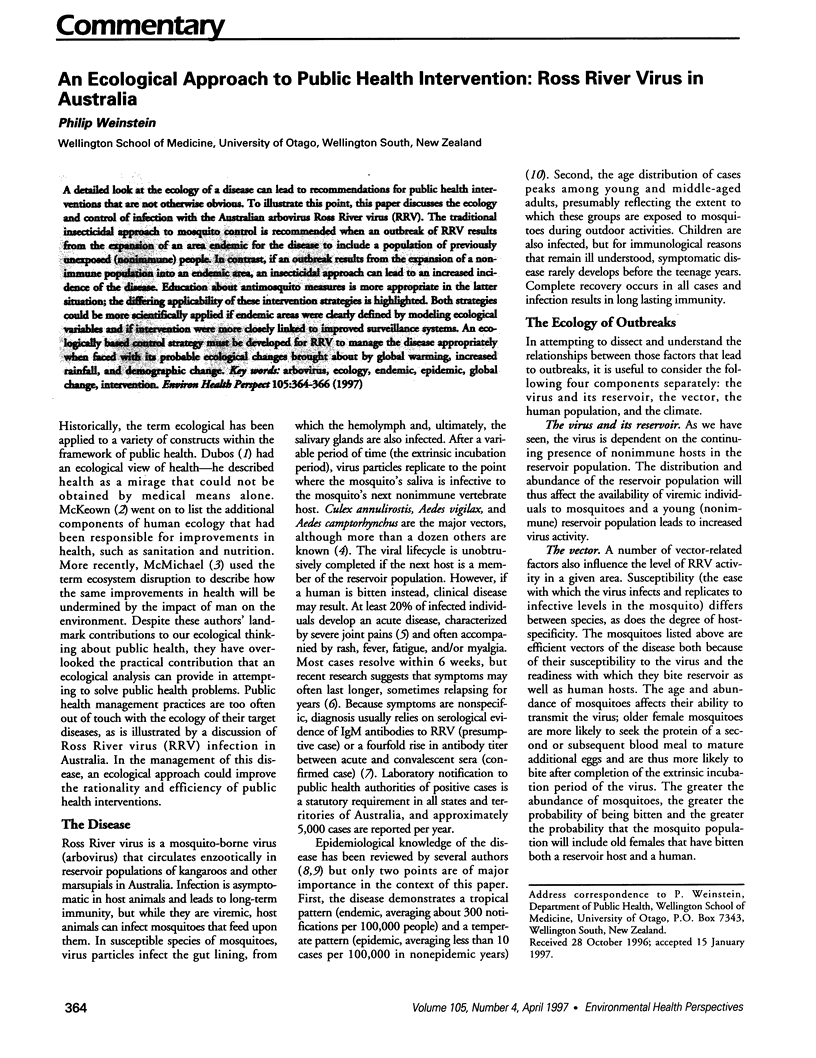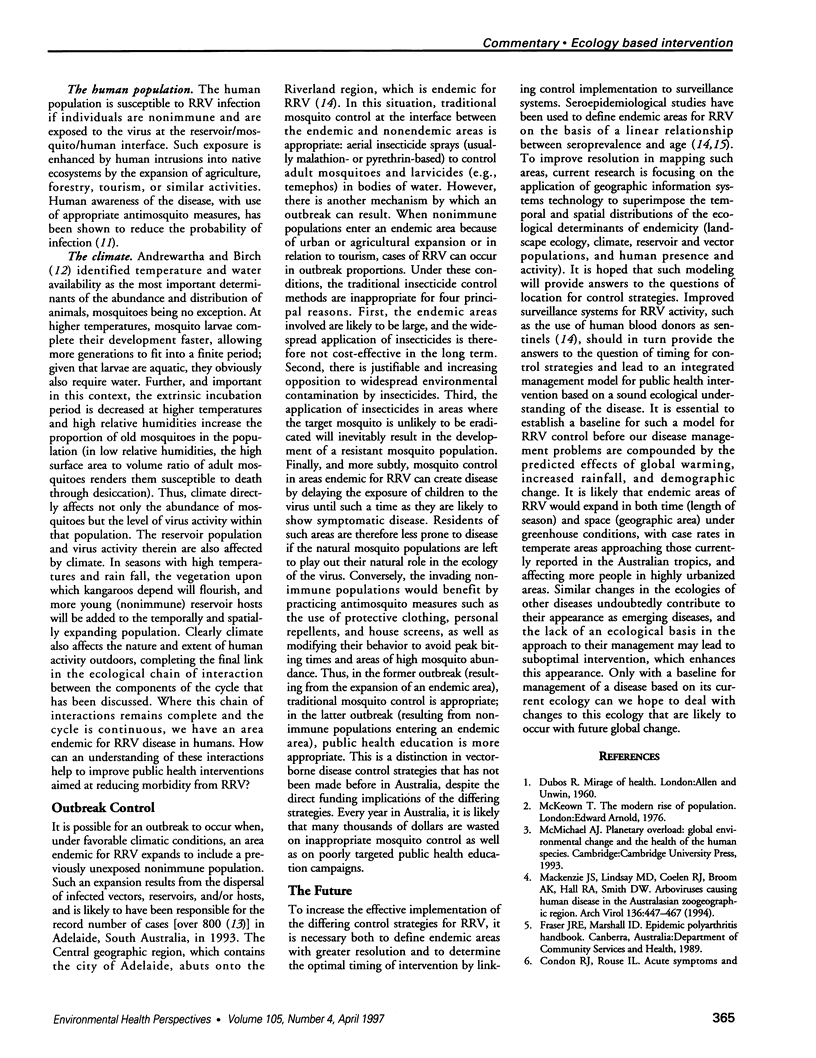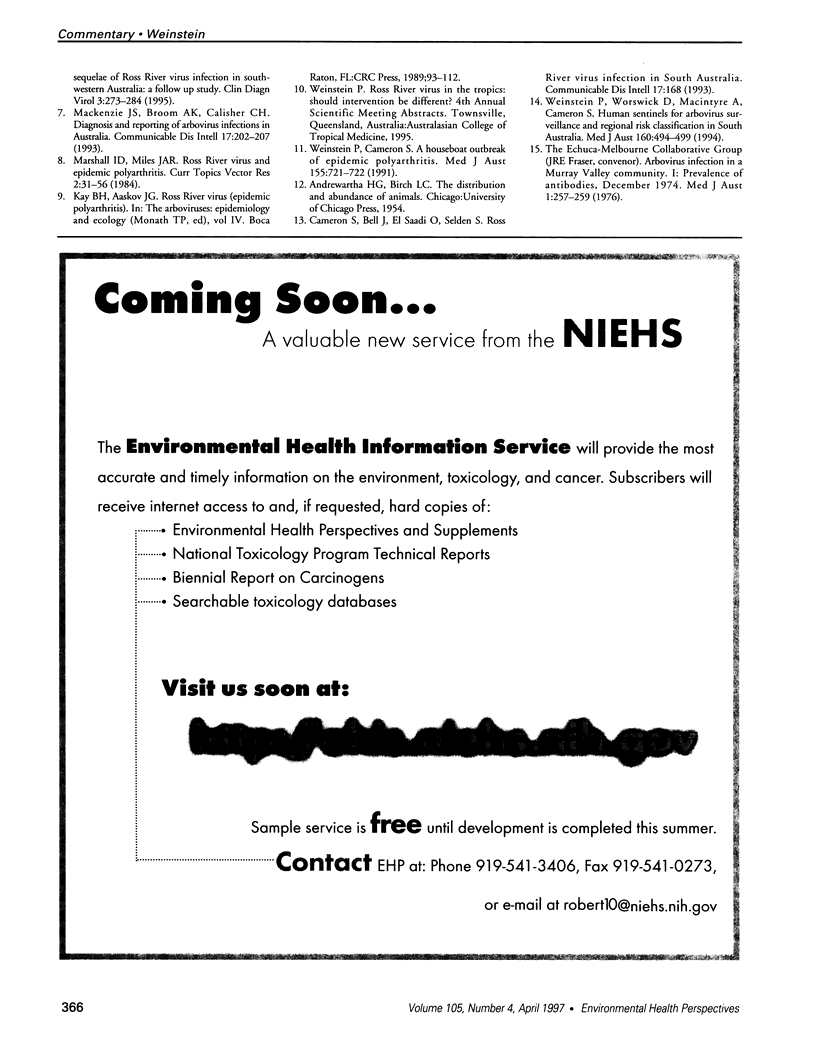Abstract
A detailed look at the ecology of a disease can lead to recommendations for public health interventions that are not otherwise obvious. To illustrate this point, this paper discusses the ecology and control of infection with the Australian arbovirus Ross River virus (RRV). The traditional insecticidal approach to mosquito control is recommended when an outbreak of RRV results from the expansion of an area endemic for the disease to include a population of previously unexposed (nonimmune) people. In contrast, if an outbreak results from the expansion of a non-immune population into an endemic area, an insecticidal approach can lead to an increased incidence of the disease. Education about antimosquito measures is more appropriate in the latter situation; the differing applicability of these intervention strategies is highlighted. Both strategies could be more scientifically applied if endemic areas were clearly defined by modeling ecological variables and if intervention were more closely linked to improved surveillance systems. An ecologically based control strategy must be developed for RRV to manage the disease appropriately when faced with its probable ecological changes brought about by global warming, increased rainfall, and demographic change. Key words: arbovirus, ecology, endemic, epidemic, global change, intervention.
Full text
PDF


Selected References
These references are in PubMed. This may not be the complete list of references from this article.
- Mackenzie J. S., Lindsay M. D., Coelen R. J., Broom A. K., Hall R. A., Smith D. W. Arboviruses causing human disease in the Australasian zoogeographic region. Arch Virol. 1994;136(3-4):447–467. doi: 10.1007/BF01321074. [DOI] [PubMed] [Google Scholar]
- Weinstein P., Cameron A. S. A houseboat outbreak of epidemic polyarthritis. Med J Aust. 1991 Nov 18;155(10):721–722. doi: 10.5694/j.1326-5377.1991.tb93991.x. [DOI] [PubMed] [Google Scholar]
- Weinstein P., Worswick D., Macintyre A., Cameron S. Human sentinels for arbovirus surveillance and regional risk classification in South Australia. Med J Aust. 1994 Apr 18;160(8):494–499. [PubMed] [Google Scholar]


